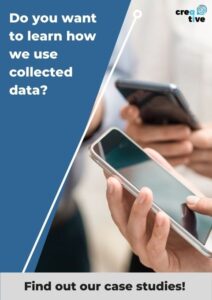
20 Jul 3 Steps in tackling a Data Collection Project for Artificial Intelligence
Data collection activity consists in gathering a variety of data, usually intended for training machine learning software.
Through this process it’s possible to obtain an archive of information organised in a structured manner and useful in identifying specific prediction models in support of artificial intelligence systems. What’s the correct way to face a data collection project for artificial intelligence?
1. Define final objectives in advance
Before dealing with the more technical aspects of a data collection project, it’s essential to define the final objectives you want to achieve through this activity. In order to provide clarity regarding the project aim, it’s important to concentrate first on the technical issues that this is capable of resolving effectively.
Having a clear idea of the final objectives allows you to determine precisely and in detail which methods and data collection software are to be used for the project, so that these are suited to your needs.
2. Choose the right method for data collection
Preparing a detailed list of necessary elements helps determine the best method of data collection to apply to a specific project and measure its relevant metrics. This choice should ideally be based on the characteristics and types of data that you expect to gather.
In order to deal with a data collection project, it’s of prime importance for the data to be accurate, reliable and high quality. This will permit you to build precise and highly efficient models of artificial intelligence.
In addition, it’s necessary to determine who should collect the data required to complete a project, and from where. Therefore, in this phase, it’s important to understand what language the users involved speak and if they can use the data collection devices correctly; also important to know is the accessibility of the information made available for the collection.
It’s equally important to comprehend where the collected data will end up. In this sense, it’s best practice to inform all involved parties about the regulations and requests concerning these aspects of collection. Users will thus be thoroughly informed about the methods of data de-identification, storage and processing.
3. Determine which tools to use in data collection
Data can be gathered by means of various technical tools. The choice of the right methods is based chiefly on the distinction between qualitative and quantitative data; it’s possible to determine which tools to use by considering your specific needs.
Quantitative data let you have an overview of a broader context, while the qualitative kind enables you to go into detail and find more specific solutions to particular project requirements. The two approaches don’t conflict with each other, but they are often used together to obtain more accurate results.
There are many tools available that make it possible to collect the necessary data. Questionnaires, photos, images, videos, focus groups and apps are only some of the possible means of collection. Choosing the most recommended way depends on the level of complexity of a project and the specific requirements of a customer.
Take-home points about data collection for artificial intelligence
![]() If you want data collection activity to produce optimum-quality results, it’s vital that the data collected be accurate, and above all, appropriate for the objective in sight. In order to launch a project with such prerequisites, it’s important to test the data set available and ensure the data are suited to the development of a specific project. The process of testing Data Collection methods enables you to save time in the subsequent stages of your project by eliminating in advance, during the initial phase, potential errors that could otherwise compromise the data collection.
If you want data collection activity to produce optimum-quality results, it’s vital that the data collected be accurate, and above all, appropriate for the objective in sight. In order to launch a project with such prerequisites, it’s important to test the data set available and ensure the data are suited to the development of a specific project. The process of testing Data Collection methods enables you to save time in the subsequent stages of your project by eliminating in advance, during the initial phase, potential errors that could otherwise compromise the data collection.





